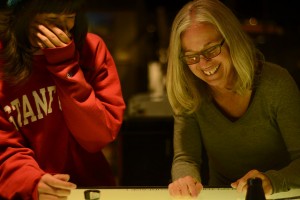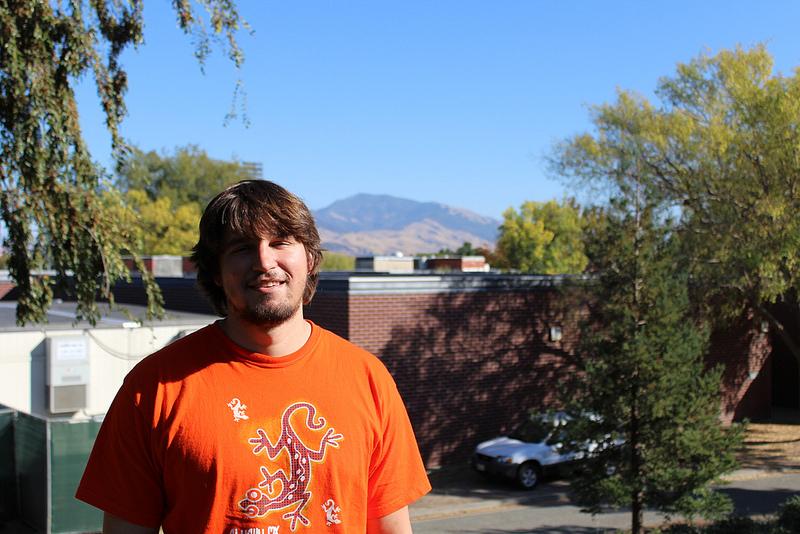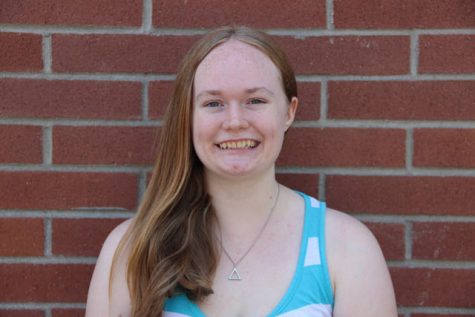The low key popularity of film photography
December 5, 2016
Film photography is still popular with student artists at Diablo Valley College, despite today’s reliance on digital cameras and smartphones.
DVC offers intro to film photography, or ART-160, and the darkroom is located on the top floor of the art building.
Photography professor Nicole White says, “A lot of people are interested in film photography as an art form. The students do a wide range of projects and I’m really happy with the work that’s being put out.”
Photo stores such as Mike’s Camera and the Looking Glass in Berkeley offer rolls of film and paper from popular film photography brands like Ilford and Kodak.
The complex process of developing film and processing it into photos is taught in detail in the ART-160 class and so are the necessary darkroom skills.
The unraveling of light-sensitive film from its canister and rolling it onto film reels must be done in complete darkness, which can present a challenge at first for novices.
“You lose all of your senses, except for touch, in the dark. After three or four rolls of film everyone becomes adept at the process,” White says.
Students can also choose to experiment in alternative processes like cyanotype, which has been around since 1870, making it one of the earliest forms of photography. Cyanotypes are bluish-colored photos as opposed to the traditional black and white.
Another alternative method of capturing a photo taught in class is photograms, which are pictures made of object’s silhouettes placed in light that don’t use a camera.
White also likes to incorporate some digital photography skills in her class in an attempt to meld traditional and modern methods of photography. She shows her students how the two can work well together.
For example, photographers can use a special film meant for transparency to print a digital photo that can be made into a contact print, which is placing the film directly on a piece of paper to develop.
White, having just begun at DVC in the Fall 2016 semester, says that her students are really interested in street photography, and a lot of them went out to photograph protests around the Bay Area regarding the 2016 election.
Others prefer to go the traditional route, and snap photos of landscapes and portraiture.
Emma O’Brien, a student in the class, prefers to photograph architecture, but her friend and classmate Kyle Cafarelli prefers creating portraits.
“I’ve been shooting film for about 5 years now, and when I first started out I enjoyed photographing landscapes,” Cafarelli says.
The influence that social media has on photographers and their artistic styles is something that made Cafarelli want to shoot portraits.
“Social media is great for photography, but it can also kill originality,” he says. “Although, it does help a person create their own style, and is really helpful when you’re stuck.”
Both students enjoy the process that film photography has over digital.
O’Brien says, “With digital, you can shoot in automatic, but for film there is a lot of adjusting that happens for every picture. It’s hands-on and you put a lot of work into everything you do.”
“There’s also a lot of ups and downs, like when you process a roll of film and it’s entirely black. But the process is definitely worth it,” she says.
Cafarelli agreed, “The whole process of developing film is great. I love the sound when you load film and hear the winder set it in place. I also love the mechanical sound of the shutter firing…it’s beautiful. So is watching the paper change in the developer and watching it go from a blank to what you’ve created.”
Photography students are encouraged to sell their prints during holiday sales that the art department hosts at the end of every Fall semester.
White also plans on doing field trips to galleries in San Francisco for creative inspiration and to allow students to further develop their artistic style.
Because of the popularity with students, more film photography courses will be available in the Spring 2017 semester. Portfolio classes will be available for students who have previously taken Photography I and II.
In addition to film photography focused courses, there will also be a hybrid course, ART-150 PK, which is called Digital Darkroom.
The course will focus on bringing digital photography into the darkroom and allow for film to find its way into online editing tools.
“The darkroom area is really a wonderful and underutilized space,” White said. “When we get a new art building, I hope to get the film photography department as popular as it once was five or six years ago.”














































































Slimnics • Dec 6, 2016 at 6:16 pm
I started with digital and now shoot film. I always prefer the look of film photos and the film camera i use is more reliable than the digital ones i used. You can see my photos search slimnics.